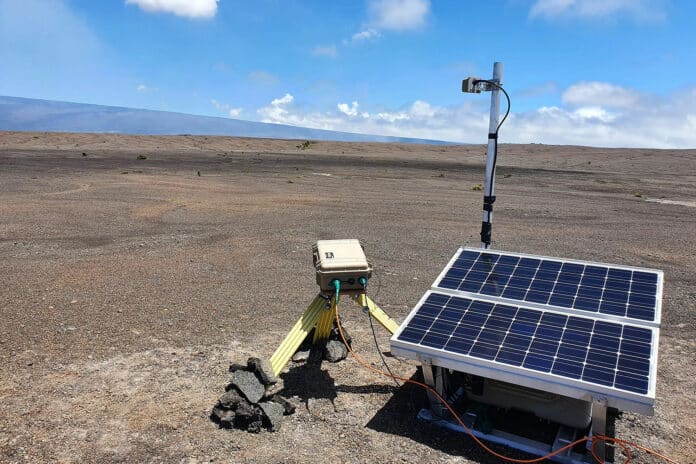Volcanic gas emissions can pose environmental and health risks to nearby communities. Monitoring emissions from volcanoes – particularly sulfur dioxide (SO2) using specialized cameras – is important for hazard forecasting. It is critical to gather long-term time series datasets because volcanoes can exhibit significant changes in activity over time.
Now, researchers have developed a cheap and low-power SO2 camera suited for long-term measuring. New SO2 camera continually measures emission rates from volcanoes and is more effective in the field than previous models that cost more than $20,000, they say.
“Our instrument uses a sensor not dissimilar to smartphone camera sensors. It is modified to make it sensitive to ultraviolet light, therefore enabling SO2 detection,” said Dr. Thomas Wilkes, a researcher at the University of Sheffield and lead author of the study.
The new design comes with a price tag of around $5,000, reducing the cost of parts needed to build the camera down to approximately a fourth of previous models. Some of the camera parts are also built using 3D printing. “We also introduce a user-friendly, freely available software for controlling the instrument and processing the acquired data in a robust manner,” Wilkes explained.
In addition, the system’s power consumption is low, with an average of 3.75 Watts – about half of what was needed to power systems presented previously. Researchers say this will be especially beneficial on sites with little solar power to harness. Their camera runs on fewer or smaller solar panels or batteries, reducing the overall cost further.
While there are other instruments to measure volcanic emissions, “the SO2 camera can provide higher time- and spatial-resolution data which could facilitate new volcanological research when installed permanently,” said Wilkes.
“Before now, only three volcanoes have had permanent SO2 cameras installed on them,” Wilkes said. “Discrete field campaigns have been carried out, and whilst they can be invaluable for a range of research questions, it is important to be able to measure volcanic activity continuously, since it can vary substantially from minutes to decades to centuries and beyond.”
Wilkes and his team also presented two preliminary data sets from Lascar, a stratovolcano in Chile, and Kilauea, a shield volcano on Hawaii’s Big Island, where their camera is in continuous operation.
Despite being cost-efficient and easy to use, the researchers pointed to some limitations of SO2 cameras: “They are dependent on meteorological conditions and work best under clear blue skies when the volcanic gas plume moves in a 90-degree angle to the viewing direction of the camera,” said Wilkes.
Journal reference:
- Thomas Charles Wilkes, Tom David Pering, Felipe Aguilera, Susana Layana, Patricia Nadeau, Christoph Kern, Andrew John Samuel McGonigle, Mauricio Aguilera, Chengxi Zhu. A new permanent, low-cost, low-power SO2 camera for continuous measurement of volcanic emissions. Frontiers in Earth Science, 2023; DOI: 10.3389/feart.2023.1088992
